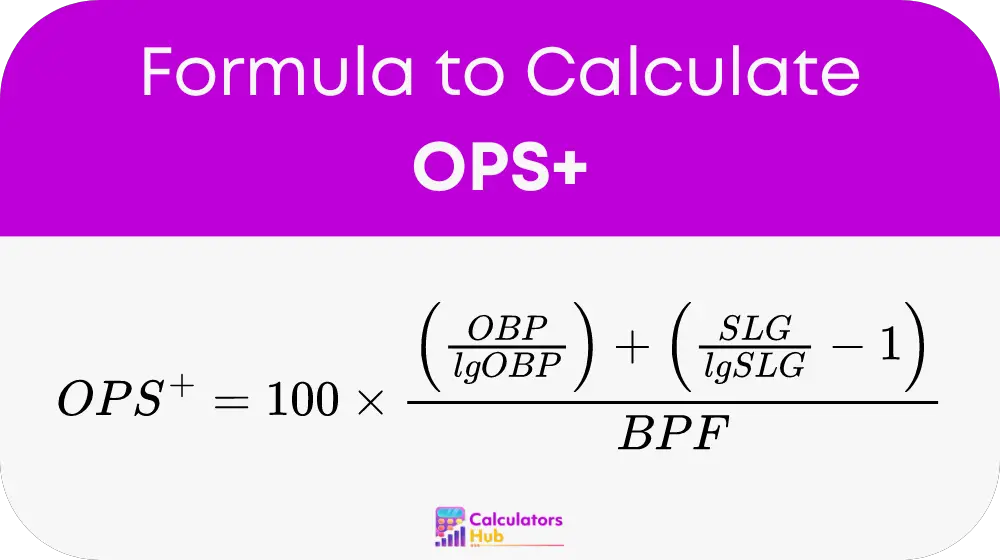The OPS+ Calculator is a specialized tool designed to normalize a player's on-base plus slugging percentages to the league average, adjusted for ballpark factors. This allows for a fair comparison of players from different teams and eras, providing a clear picture of their offensive contributions relative to their peers.
Formula of OPS+ Calculator

Components Explained:
- OPS+: This is the final On-Base Percentage Plus Slugging Plus adjusted for league average.
- OBP: The player's on-base percentage. Calculated using hits, walks, and at-bats, or sourced from baseball statistics websites.
- lgOBP: The league average on-base percentage for the same season and league as the player.
- SLG: The player's slugging percentage. Calculated using hits, bases earned, and at-bats, or sourced from statistical websites.
- lgSLG: The league average slugging percentage for the same season and league.
- BPF: A park factor that adjusts for the differences in player's home ballparks, affecting hitting.
Utility Table
To further aid in understanding, here’s a table summarizing key terms and their relevance to calculating OPS+ without manual computation:
| Term | Description | Utility |
|---|---|---|
| OBP | On-base Percentage | Measures how frequently a player reaches base |
| SLG | Slugging Percentage | Measures power by evaluating total bases per at-bat |
| lgOBP | League Average On-base Percentage | Benchmark for comparing player performance |
| lgSLG | League Average Slugging Percentage | Helps contextualize a player's power output |
| BPF | Ballpark Factor | Adjusts stats for the home ballpark influence |
Example of OPS+ Calculator
Consider a player with an OBP of .340 and a SLG of .450 in a league where the average OBP and SLG are .320 and .400 respectively, and playing in a ballpark with a BPF of 1.02. Plugging these values into the OPS+ formula:
OPS+ = 100 * ((.340 / .320) + (.450 / .400) - 1) / 1.02 ≈ 121
This result indicates that the player’s performance is 21% above the league average after adjusting for ballpark effects.
Most Common FAQs
OPS+ is essential because it provides a normalized measure to compare players across different environments, factoring in variations in league averages and ballpark dimensions.
Yes, OPS+ is specifically designed to compare players from any era, making it invaluable for historical analysis as well as current evaluations.
An OPS+ of 100 is average, while scores above 100 indicate above-average performance and below 100 suggest below-average output.